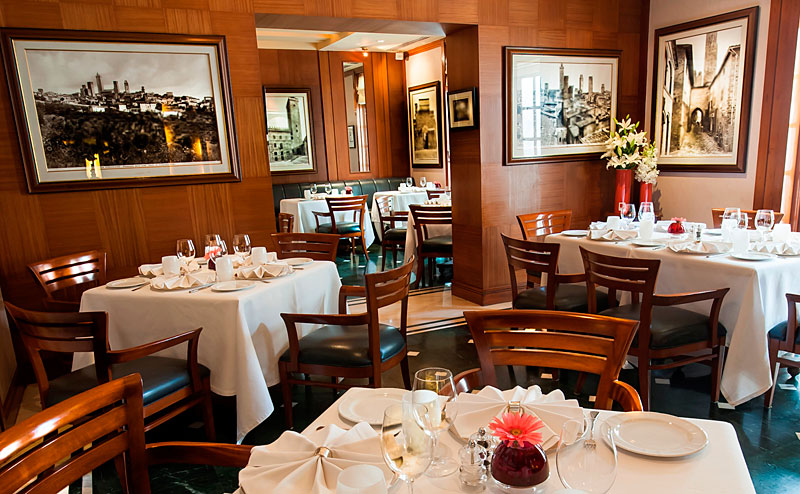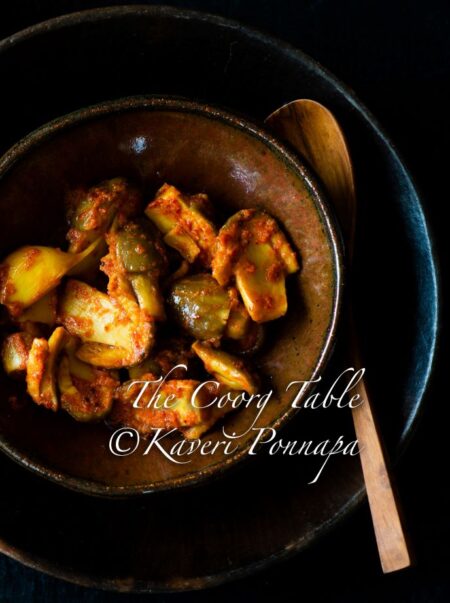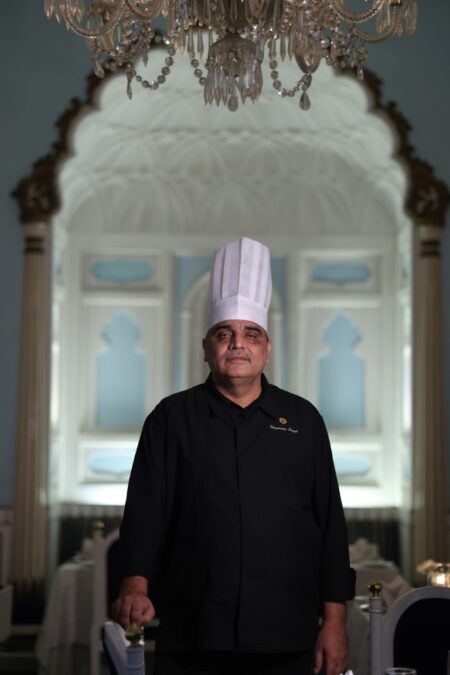The mood at San Gimignano is lively at lunchtime, light streaming in through the windows that look out onto a walled courtyard garden and the temptation to dine al-fresco, particularly in winter, is great. But, so far, every time I have visited this gem of a restaurant -named after the Tuscan hill town famous for its medieval architecture and dramatic tower houses -the stylish interior seating area has won, and the terrace seating is postponed for another time. With its luxurious, leather covered chairs, wood-panelled walls hung with sepia-tinted images of the mellow architecture of the town from which it takes its name, the atmosphere is a pleasing mix of formal and intimate. The tables are just far apart enough for privacy and comfort, and the service discreet. The menu offers a wide choice without being unnecessarily elaborate; the dishes concentrate on flavour and excellence of ingredients in their prime over any kind of overstatement.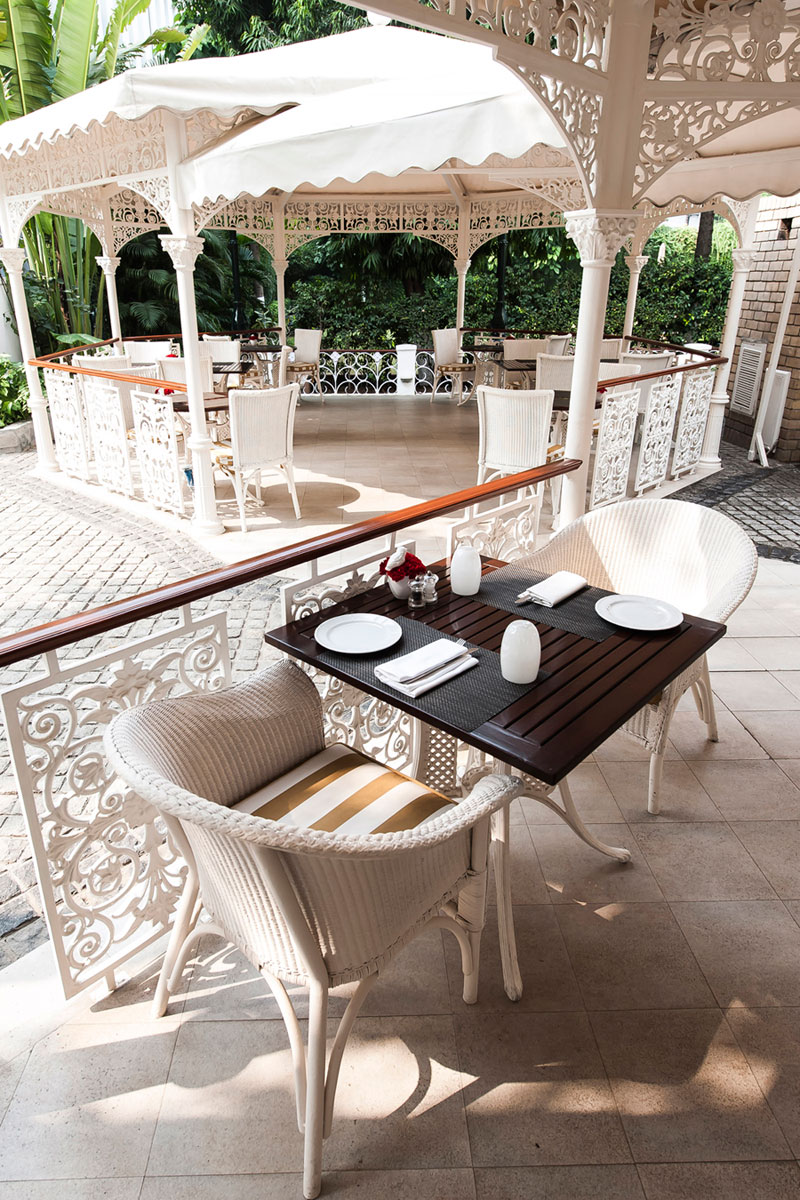
A starter of warm sea scallopswith asparagus, both supple and tender, topped with the mild citrus and sweet notes of coriander and vanilla froth matches the afternoon perfectly. Lemon and thyme scented oven baked Sea Bass filets with capers, tomatoes, crisp potatoes, garlic butter and saffron holds all the various ingredients in several harmonies with each other. Intriguingly, saffron is a spice that has a very special place in the history of this hill town.
Saffron was such an important part of the economy of the city in the 13th century that it was often used as a replacement for money. It was possible to repay loans in cash and saffron, pay off bandits, and was also offered as a gift to high-ranking officials. Some of the landmark towers of San Gimignano town were funded by the lucrative trade in saffron. Revived after several centuries of neglect, saffron from this region now carries a DOP (Denomiazione di Origine Protetta) certification.
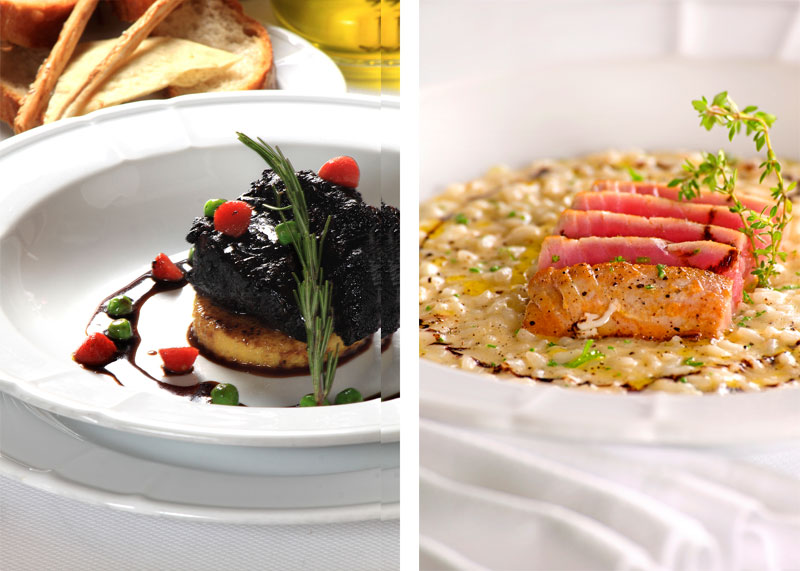
There are sleek pouches of ravioli filled with a mix of porcini and wild mushrooms, served with the freshest, most vivid tomatoes (a taste we almost don’t recognize anymore, with all the altered versions we are getting used to consuming), and an unforgettable salad of grilled artichokes scattered with pine nuts, drizzled withsharp citrus. My companion and I drank a bottle of Salviano Orvieto Classico Superioro 2015, ideal that afternoon.
The menu here changes gently; but I would be surprised to see the Parmesan soup with truffle oil, go, a self-declared classic. There is a compact selection of risottos: quail, spinach leaves and toasted coffee beans would be a tempting choice. Pizzas are pared down in their simplicity, offering toppings such as artichokes, tomato, red onions, spinach and bacon, quick, efficient lunchtime picks.
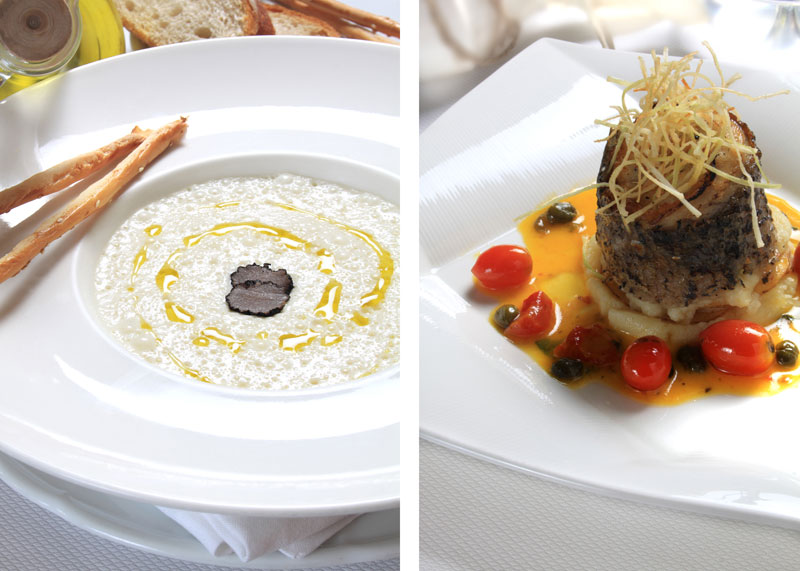 At night, the atmosphere at San Gimignano is sequestered, warmly lit, and extremely elegant in an understated way. One of the delights of this restaurant is the knowledge that you can dine very well indeed on dishes that engage all your senses, without having your attention constantly drawn to various innovative flourishes on your plate. My main course was tuna in a tomato and cannellini bean broth with dill and spinach. The pink, almost translucently tender tuna came with a light broth that surprised with the intensity of flavours it concealed, and demanded to be scooped up to the last spoonful. This was a custom preparation, presented by Executive Sous Chef Saurabh Singh Chandel, a variation on the Tuscan spiced tuna steak, caramelized cauliflower, dill honey and lemon glaze on the menu. A superbly crusted soft shell crab atop hand-crafted squid ink tagliolini served with fresh tomatoes and green beans was another choice on our table; but the star dish of the evening was undoubtedly the homemade pappardelle in a lamb and porcini mushroom sauce with rosemary: rich, deep and earthy, each mouthful released layers of flavours, all complementing each other.
At night, the atmosphere at San Gimignano is sequestered, warmly lit, and extremely elegant in an understated way. One of the delights of this restaurant is the knowledge that you can dine very well indeed on dishes that engage all your senses, without having your attention constantly drawn to various innovative flourishes on your plate. My main course was tuna in a tomato and cannellini bean broth with dill and spinach. The pink, almost translucently tender tuna came with a light broth that surprised with the intensity of flavours it concealed, and demanded to be scooped up to the last spoonful. This was a custom preparation, presented by Executive Sous Chef Saurabh Singh Chandel, a variation on the Tuscan spiced tuna steak, caramelized cauliflower, dill honey and lemon glaze on the menu. A superbly crusted soft shell crab atop hand-crafted squid ink tagliolini served with fresh tomatoes and green beans was another choice on our table; but the star dish of the evening was undoubtedly the homemade pappardelle in a lamb and porcini mushroom sauce with rosemary: rich, deep and earthy, each mouthful released layers of flavours, all complementing each other.
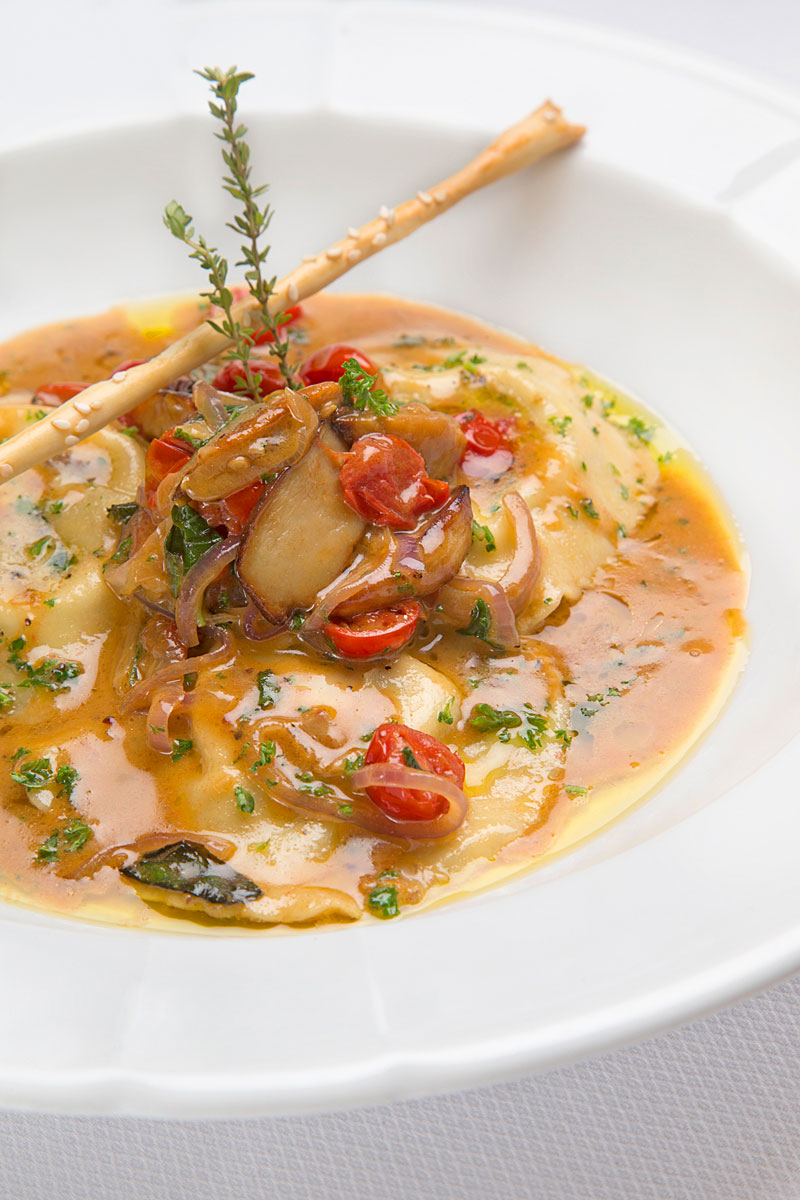
There are nine desserts on the menu, every one of them worth sampling. Frutti Di Bosco Pannacotta Con Frutta Minestroniis a classic pannacotta, painted with a berry compote.Neither too tart, nor too sweet, retaining a slight crunch of seeds in a beautiful balance of texture and flavour, it is an artist’s version of this well-known dessert. Tratuffo Al Cioccolato is chocolate several ways: a dark chocolate genoise cake topped with white milk and dark chocolate mousse, coated with chocolate ganache solidly rich and predictable. The exquisitely delicate, herb scented Torta Di Mela — an apple cake with rosemary, honey gelato and kahlua caramel sauce is the dessert I would go back to time and again.
In an age of frequently self-consciously inventive food, San Gimignano transports you to a different world. It is luxurious and approachable, the foodseemingly untouched by trends, focussed on releasing every bit of simple deliciousness in a dish.A place to spend a few very pleasurable hours of the day the old-fashioned way.

San Gimignano’s wine list, known amongst its regular guests for the excellent selection of Italian wines from small producers and less-publicized regions is being updated and replenished. Some current selections include: Danzante Pinot Grigio 2016; Marchesi Di Barolo Gavi Classico DOCG 2017; Casone Pinot GrigioDelleVenezie IGT 2016; Veneto Tenuta Sant’ Antonio Scaia Garganega e Chardonnay
San Gimignano
The Imperial Hotel, Janpath Lane, Janpath, New Delhi-110001
Restaurant Reservations: 011-41116608
By: Kaveri Ponnapa
Image credits: The Imperial, New Delhi
This article appeared in Volume 15, Issue 2 April May June 2019 Sommelier India Magazine

